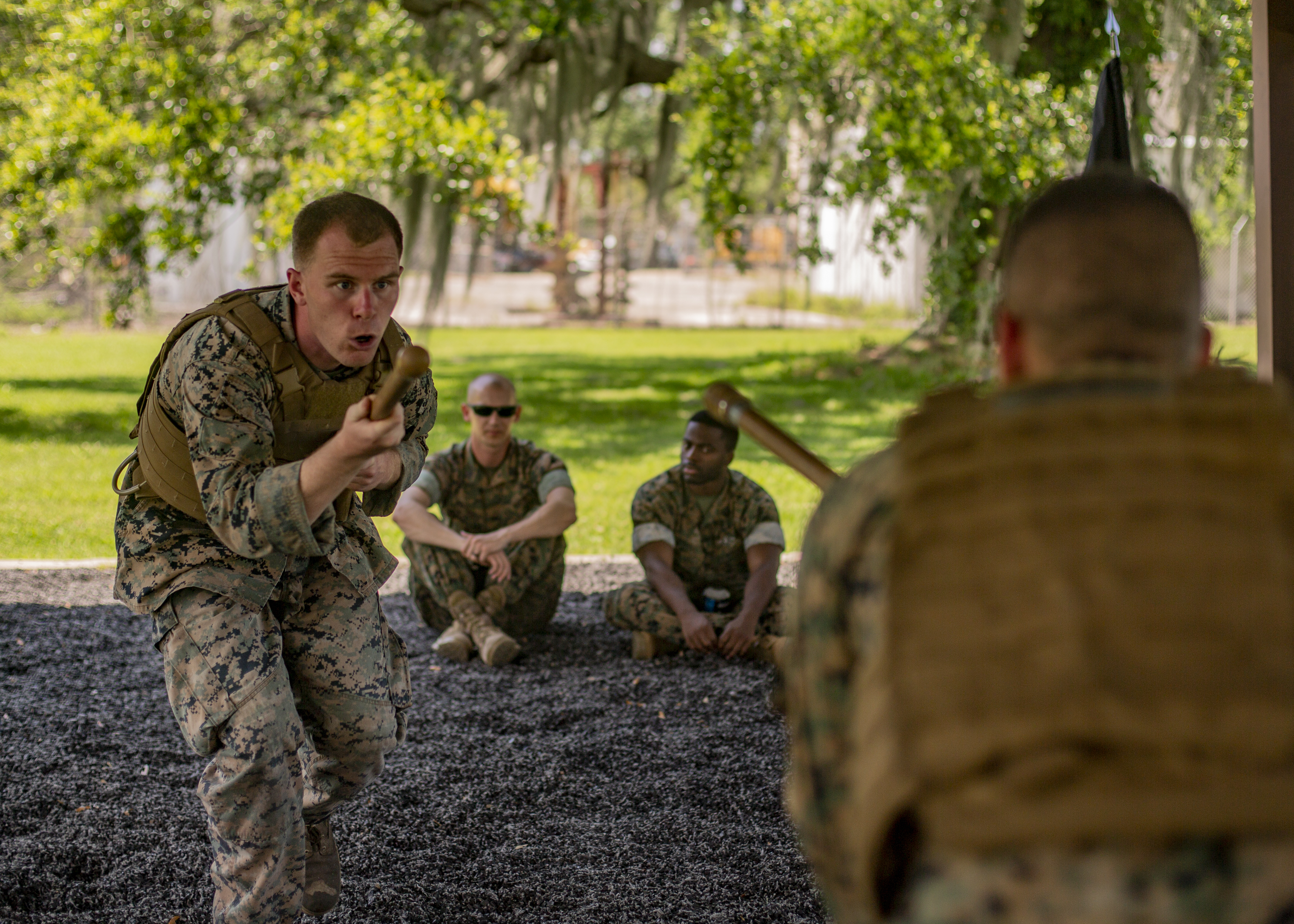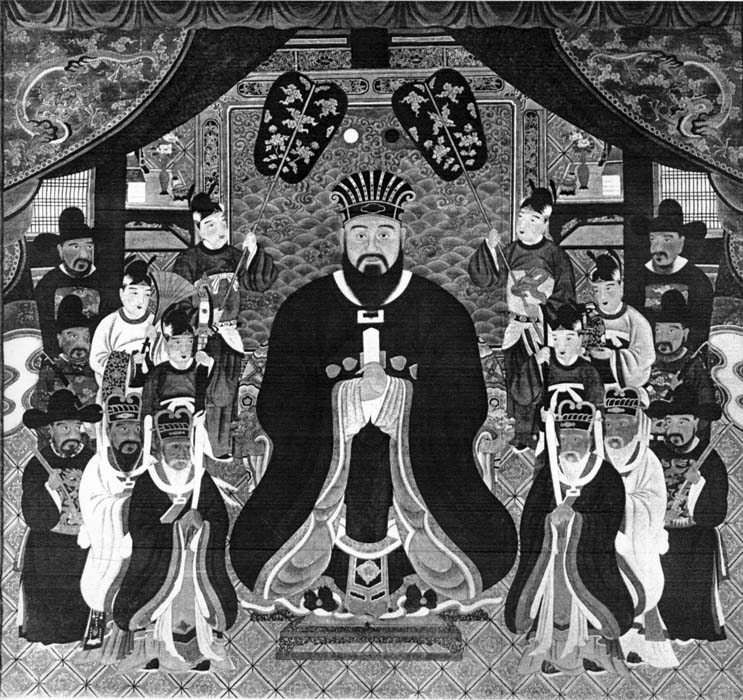|
Blocking (martial Arts)
In martial arts, blocking is the act of stopping or deflecting an opponent's attack for the purpose of preventing injurious contact with the body. A block usually consists of placing a limb across the line of the attack. Examples in specific arts Styles and types of blocking, as well as terminology, vary widely among the various martial arts. In Japanese martial arts such as Karate, these techniques are referred to as ''uke waza''. Examples include ''age uke'' (rising block) and ''shuto uke'' (knife hand guarding block). In Korean martial arts such as taekwondo, these techniques are referred to as (막기), with some examples being (rising block) and (knifehand guarding block). Some martial arts, such as Capoeira, reject blocking techniques completely as they consider them too inefficient. In Capoeira, they use evasion instead of blocking. Types of blocks Inside blocks An inside block deflects a Strike (attack), strike away from the defender and away from the attacker. ... [...More Info...] [...Related Items...] OR: [Wikipedia] [Google] [Baidu] |
Roundhouse Kick
A roundhouse kick (also known as round kick or turning kick) is a kick in which the practitioner lifts the knee while turning the supporting foot and body in a semicircular motion, extending the leg striking with the lower part of the shin and/or the instep (top of the foot). The Ball (foot), ball of the foot can also be used to strike the target and is preferable when power breaking thick boards. This type of kick is utilized in many different martial arts and is popular in both non-contact and full-contact martial arts competitions. The kick has many variations based on stance, leg movement, striking surface, and the height of the kick. Semi-circular kick A semi-circular kick is a round kick to ''forty five degree roundhouse kick'' (or "diagonal kick"). Most popular in kick-boxing, lethwei, and muay Thai, it can be used in almost every situation. With this kick, all parts of the opponent's body can be attacked and every kind of attack can be countered. File: semi1.jpg, Low k ... [...More Info...] [...Related Items...] OR: [Wikipedia] [Google] [Baidu] |
Martial Arts
Martial arts are codified systems and traditions of combat practiced for a number of reasons such as self-defence; military and law enforcement applications; combat sport, competition; physical, mental, and spiritual development; entertainment; and the preservation of a nation's intangible cultural heritage. The concept of martial arts was originally associated with East Asian tradition, but subsequently the term has been applied to practices that originated outside that region. Etymology "Martial arts" is a direct English translation of the Sino-Japanese word (, ). Literally, it refers to "武 martial" and "芸 arts". The term ''martial arts'' was popularized by mainstream popular culture during the 1960s to 1970s, notably by Hong Kong action cinema, Hong Kong martial arts films (most famously those of Bruce Lee) during the so-called "chopsocky" wave of the early 1970s. According to John Clements, the term '':wikt:martial art, martial arts'' itself is derived from an older ... [...More Info...] [...Related Items...] OR: [Wikipedia] [Google] [Baidu] |
Karate
(; ; Okinawan language, Okinawan pronunciation: ), also , is a martial arts, martial art developed in the Ryukyu Kingdom. It developed from the Okinawan martial arts, indigenous Ryukyuan martial arts (called , "hand"; ''tī'' in Okinawan) under the influence of Chinese martial arts. While modern karate is primarily a striking art that uses punches and kicks, traditional karate training also employs Throw (grappling), throwing and joint locking techniques. A karate practitioner is called a . Beginning in the 1300s, early Chinese martial arts, Chinese martial artists brought their techniques to Okinawa. Despite the Ryukyu Kingdom being turned into a puppet state by Japanese samurai in 1609, after the Invasion of Ryukyu, its cultural ties to China remained strong. Since Ryukyuans were banned from carrying swords under samurai rule, groups of young aristocrats created unarmed combat methods as a form of resistance, combining Chinese and local styles of martial arts. Training emph ... [...More Info...] [...Related Items...] OR: [Wikipedia] [Google] [Baidu] |
Taekwondo
Taekwondo (; ; ) is a Korean martial art and combat sport involving primarily kicking techniques and punching. "Taekwondo" can be translated as ''tae'' ("strike with foot"), ''kwon'' ("strike with hand"), and ''do'' ("the art or way"). In addition to its five tenets of courtesy, integrity, perseverance, self-control and indomitable spirit, the sport requires three physical skills: ''poomsae'' (, Form), ''kyorugi'' (, Sparring) and ''gyeokpa'' (, Breaking Technique). Poomsae are patterns that demonstrate a range of kicking, punching and blocking techniques, kyorugi involves the kind of sparring seen in the Olympics, and gyeokpa is the art of breaking wooden boards. Taekwondo also sometimes involves the use of weapons such as swords and nunchucks (nunchaku). Taekwondo practitioners wear a uniform known as a . Taekwondo is a combat sport which was developed during the 1940s and 1950s by Korean martial artists with experience in martial arts such as karate and Chinese martial ar ... [...More Info...] [...Related Items...] OR: [Wikipedia] [Google] [Baidu] |
Makgi
Taekwondo techniques vary between most schools and level and not all techniques are included.Techniques often combined into shorter set (Hyeong), but these vary from school to school. Hand attacks Taekwondo hand strikes are as a close distance alternative to kicks. They are executed in a number of ways from standing, jumping, spinning and rushing forwards. Hand strikes make up fast combinations of strikes which can leave an opponent stunned and unable to defend himself. Taekwondo hand strikes can be separated into two distinct styles: * Closed hand strikes () * Open hand techniques () Various surfaces of the hand may be engaged as the striking surface depending on which area of the opponents body which is being targeted. This leads to a large array of hand positions. * Forefist - A closed fist may be jabbed out directly to strike with the forefist knuckles. This is a suitable position for general punches to soft areas of the body. Without protection, it is inadvisable to strik ... [...More Info...] [...Related Items...] OR: [Wikipedia] [Google] [Baidu] |
Capoeira
Capoeira () is an Afro-Brazilian martial art and game that includes elements of dance, acrobatics, capoeira music, music, and spirituality. It likely originated from enslaved Mbundu people, of the Kingdom of Ndongo, in present-day Angola. The Mbundu of Ndongo had a formal military in which soldiers were professionally trained for combat. When Mbundu people were captured and sold into the Atlantic Slave Trade, they would have brought these fighting abilities with them to Brazil, where it developed into Capoeira. It is known for its acrobatic and complex manoeuvres, often involving hands on the ground and inverted kicks. It emphasizes flowing movements rather than fixed stances; the ''List of capoeira techniques#Ginga, ginga'', a rocking step, is usually the focal point of the technique. Though often said to be a martial art disguised as a dance, capoeira served not only as a form of self defense, but also as a way to maintain spirituality and culture. Capoeira has been practic ... [...More Info...] [...Related Items...] OR: [Wikipedia] [Google] [Baidu] |
Strike (attack)
A strike is a directed, forceful physical attack with either a part of the human body or with a handheld object (such as a melee weapon), intended to cause blunt trauma, blunt or penetrating trauma upon an opponent. There are many different varieties of strikes. A strike with the hand closed into a fist is called a ''punch (strike), punch'', a strike with a fingertip is called a ''jab'', a strike with the leg or foot is called a ''kick'', and a strike with the head is called a ''headbutt''. There are also other variations employed in martial arts and combat sports. "Buffet" or "beat" refer to repeatedly and violently striking an opponent; this is also commonly referred to as a combination, or combo, especially in boxing or fighting video games. Usage Strikes are the key focus of several sports and arts, including boxing, savate, karate, Muay Lao, taekwondo and wing chun. Some martial arts also use the fingertips, wrists, forearms, shoulders, back and hips to strike an oppone ... [...More Info...] [...Related Items...] OR: [Wikipedia] [Google] [Baidu] |
Kick
A kick is a physical strike using the leg, in unison usually with an area of the knee or lower using the foot, heel, tibia (shin), ball of the foot, blade of the foot, toes or knee (the latter is also known as a knee strike). This type of attack is used frequently by hooved animals as well as humans in the context of stand-up fighting. Kicks play a significant role in many forms of martial arts, such as capoeira, kalaripayattu, karate, kickboxing, kung fu, wing chun, MMA, Muay Thai, pankration, pradal serey, savate, sikaran, silat, taekwondo, vovinam, and Yaw-Yan. Kicks are a universal act of aggression among humans. Kicking is also prominent from its use in many sports, especially those called football. The best known of these sports is association football, also known as soccer. History The English verb to kick appears in the late 14th century, meaning "to strike out with the foot", possibly as a loan from the Old Norse "kikna", meaning "bend backwards, sink ... [...More Info...] [...Related Items...] OR: [Wikipedia] [Google] [Baidu] |
Strike (attack)
A strike is a directed, forceful physical attack with either a part of the human body or with a handheld object (such as a melee weapon), intended to cause blunt trauma, blunt or penetrating trauma upon an opponent. There are many different varieties of strikes. A strike with the hand closed into a fist is called a ''punch (strike), punch'', a strike with a fingertip is called a ''jab'', a strike with the leg or foot is called a ''kick'', and a strike with the head is called a ''headbutt''. There are also other variations employed in martial arts and combat sports. "Buffet" or "beat" refer to repeatedly and violently striking an opponent; this is also commonly referred to as a combination, or combo, especially in boxing or fighting video games. Usage Strikes are the key focus of several sports and arts, including boxing, savate, karate, Muay Lao, taekwondo and wing chun. Some martial arts also use the fingertips, wrists, forearms, shoulders, back and hips to strike an oppone ... [...More Info...] [...Related Items...] OR: [Wikipedia] [Google] [Baidu] |






